31 May Review: GODOX V860III Flash for Macro Photography
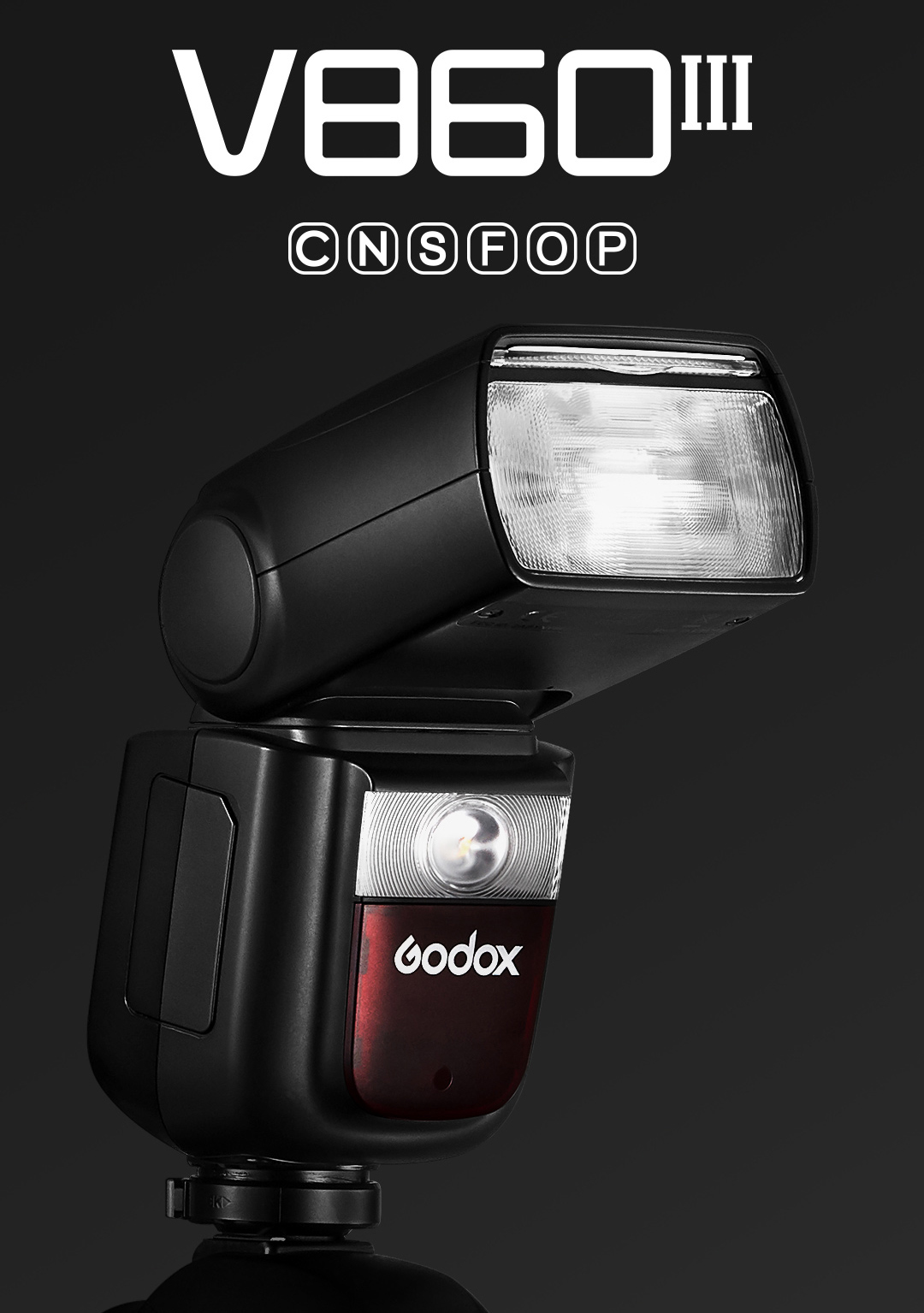
For modern Macro Photography using a flash can benefit the sharpness and quality of your images greatly.
As soon as our motifs are tiny, moving animals, like insects, a flash can be a game changer.
I have been a loyal Godox User, since i first discovered their V Series, which uses a Li-ion battery instead of being powered by standard batteriy sets.
My various sets of eneloop batteries have not been used often since.
For my last trip to South Africa i decided to test the V860IIIO alongside my trusty V350O, to see how the bigger brother works on my compact Micro-four-thirds (MFT) setup.
Let us take a look at the V860III specifications, talk about the Pros and Cons and find out if it is as good as the V1, which I have tested before, for Macro Photography.
About GODOX

The chinese Company focuses on innovative lighting equipment and solutions. GODOX offers a broad range of studio photography equipment, studio flashes, portable power packs, outdoor flashes, flash accessories, camera flashes and flash control systems (triggers).
Their innovative products are of high quality at a moderate price tag.
With the V series they offer a range of flashes that have some obvious advantages over other brands and models.
Here have written an article on the GODOX V series features here, if you are interested.
To learn more about the innovative Godox MF12, you can read my review here.
The GODOX V860III
As most of Godox’ flashes, the V860III TTL Li-ion Camera Flash is available for Canon, Nikon, Sony, Fuji, Olympus and Panasonic Cameras (watch for the letters C/N/S/F/O/P in the model version´s name).
Just like the product name says, it is the successor of the V860II, which was very similar, but got some substancial feature upgrades (like the modeling light).
The Specs are very similar to the GODOX V860II Speedlite, but there are some differences that could make you consider upgrading even if you already own the V860II.
You can find and read the full manual of the V860IIIO here.
Specifications
Battery: Lithium battery 7.2V/2600mAh (removable)
Recycling time: Approx. 0.01 to 1.5 sec
Number of flashes (approx): 480 full power flashes
Flash Colour temperature: 5600K +/-200K
Flash Duration: 1/300s to 1/20000s
Optional external power supply: No
Power: 76Ws
Maximum Guide Number 28m @ 50mm & ISO 100
Weight: 410 grams (without batters), 520grams (with battery)
W x H x D: 195 x 75 x 59mm
Exposure Control System: E-TTL II
Flash head angles: swivel 0°-330° horizontally, -7°-12ß° vertically
Flash head zoom: 20mm – 200mm
High speed sync (HSS): Yes (up to 1/8000s)
Second-curtain flash sync: Yes
Modelling flash: Yes (fired with camera’s depth-of-field preview button)
Modelling lamp: Yes 2W LED continuous light with 10 step adjustable output, colour temperature 5300K
Multi (stroboscopic) flash: Yes
Colour temperature info communication: Yes
Remote shutter release: No
Custom function: 11
Flash settings from camera menus (with compatible cameras only): Yes
External flash exposure sensor (S1, S2): Yes
PC terminal: Yes 2.5mm sync port
USB socket for firmware updates: Yes (USB-C port)
Radio Wireless (RF) 2.4GHz (master & slave)
Godox radio wireless X system
Max. range approx. 100m
Master controls up to 4 groups. (A, B, C & D).
Slave / Receiver groups 5 (A, B, C, D & E).
Dedicated X-series controller needed to fire it.
32 channels with 99 IDs
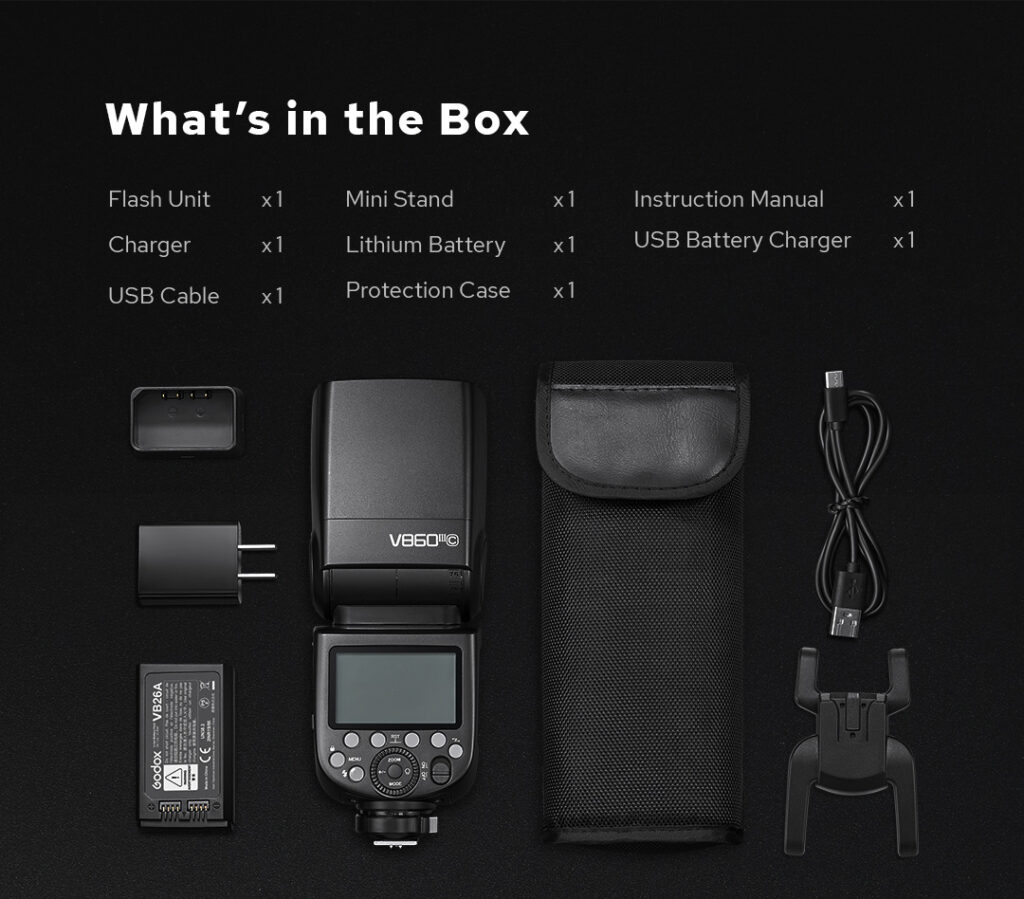
Tip: the height of the Godox V860III with the flash head looking forward is approx. 13,7 cm, with the flash head being approx. 7cm wide..
This might be important measurements if you are planning on getting a customized flash diffuser for the speedlite.
What are the V860III´s best features?
Li-ion Battery
One of the features that is a big time-saving aspect for me, is the Godox battery that is used for the V Series speedlites..
I have always been a big fan of the eneloop batteries and own 10 sets of them.
I must admit though, that after using the GODOX Li-ion batteries i have not missed them a single day.
Instead of using 4 batteries per flash, i can now change my single battery a lot easier.
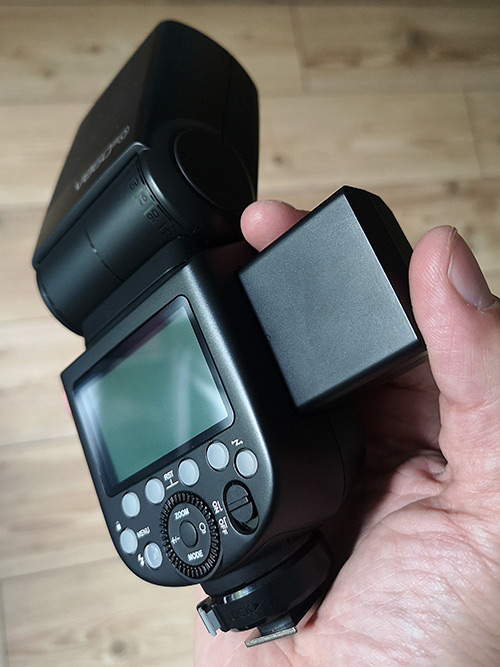
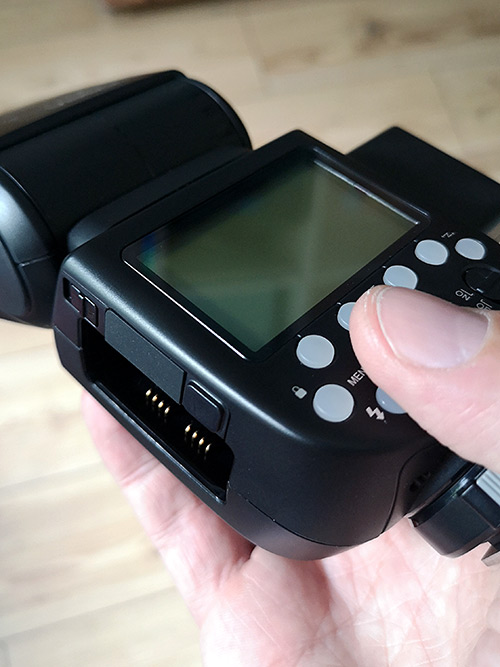
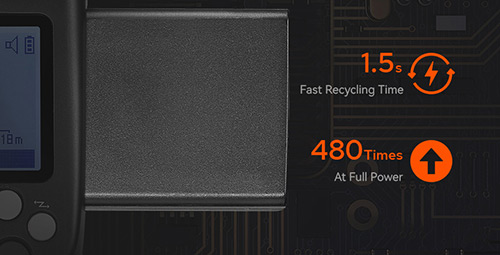
Just like the V1 the V860iii has the same design, where there is no battery cover: the battery itself seals the battery bay.
This speeds up changing the battery considerably, even one-handed.
The battery also provides a stable and continuous power-output that is even superior to the eneloops.
Although i always have a second Li-ion Battery for my various V flash models with me, I have never run out of power on my macro trips and can hardly imagine a situation where this could happen.
A thoughtful design fact: the battery of the V860iii is interchangeable with the V1.
Modeling Lamp
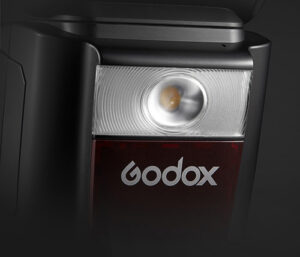
Like the V1, the the V860III has a built-in modeling lamp, which can act as a focusing light for macro photography.
At night this really comes in handy, as well as when your viewfinder is dark and focusing can be challenging.
You forgot your dedicated focusing light?
No problem, the V860iii has you covered.
For a macro diffuser, that has no backplate, like the Cygnustech Diffuser for example, it actually perfectly integrates as a focusing light.
The V860III also remembers if you had your lamp turned on previously and will again turn it on, when you shut down the speedlite earlier and repower it.
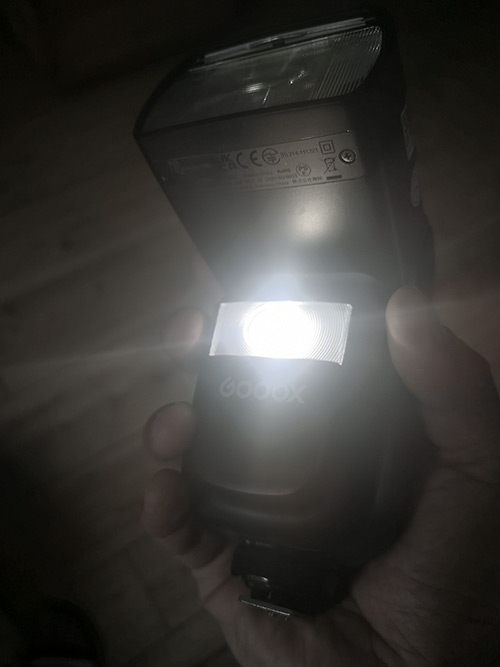
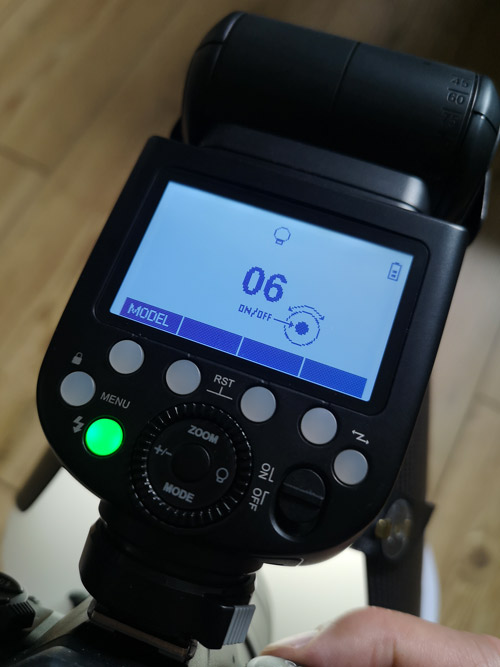
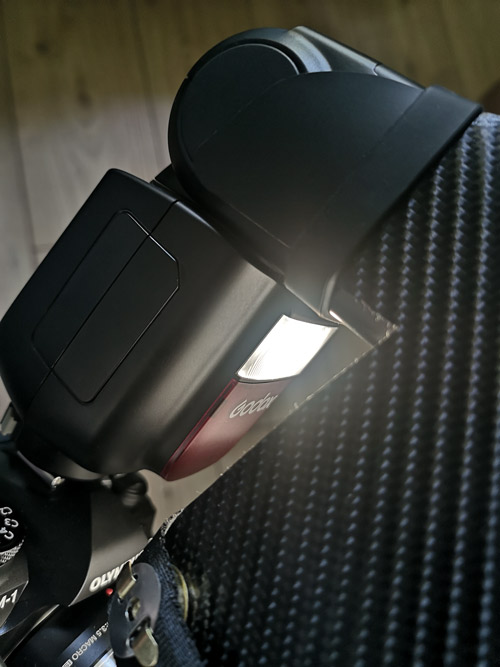
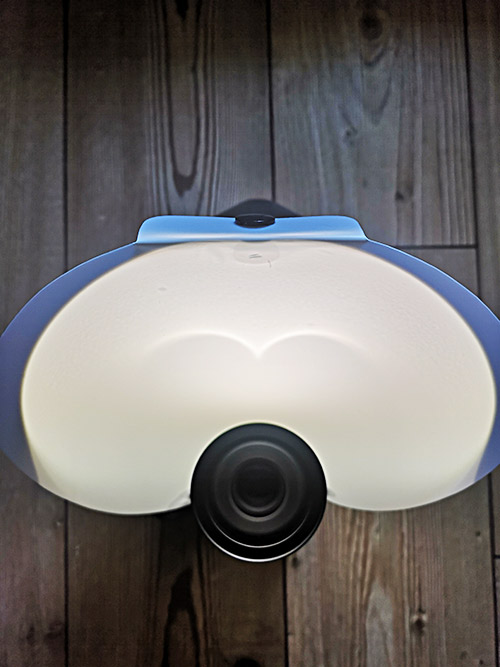
Quick switch for Manual and TTL
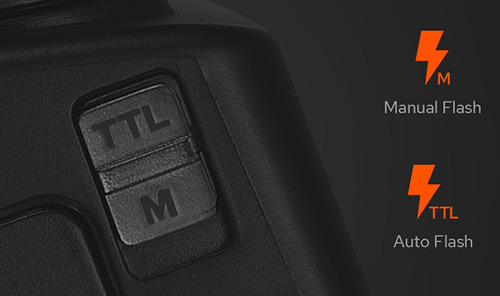
The Quick switch for Manual and TTL is very practical.
This 7mm small switch is located on the top left side of the flash body, next to the battery slot.
I don´t use this much for macro photography, but in scenarios where you need to switch modes it is a one-click-solution and hence very fast.
Additional features
The V860III shares another feature with the V1: the hot shoe quick-lock. Like i mentioned in another review, i cannot share the negative thoughts regarding the mechanism, for me it is as stable as the screwing mechanism and even sits a bit tighter, if you ask me.
I like how easy and quick the flash can be attached.
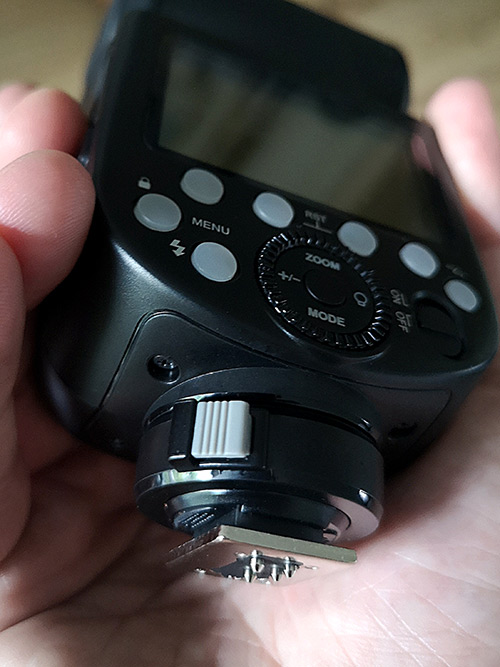
The V860III also features the 2.4G wireless X system and can communicate and fire other Godox flashes as transmitter or receiver.
This integrates wonderfully with my set of MF12, so i can choose if i control them with a dedicated trigger or with the flash on-camera, directly.
Using the GODOX 860III or the V350 for Macro Photography?
While the V350 is clearly the flash i am using the most, the V860III will also always be in my bag.
Both flashes have their advantages and scenarios when i choose to use them.
Let me explain.
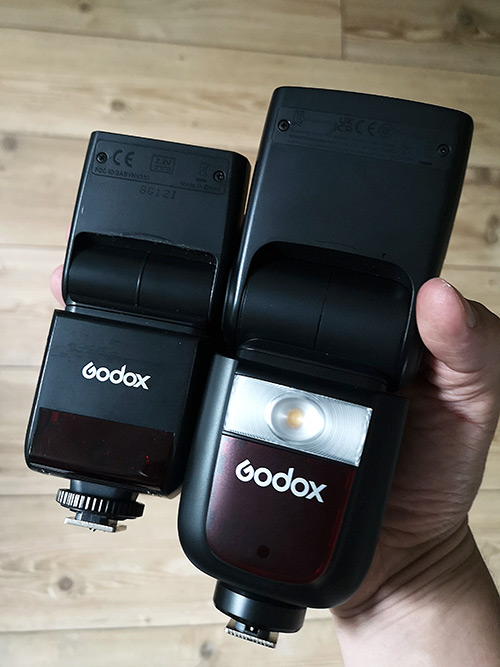
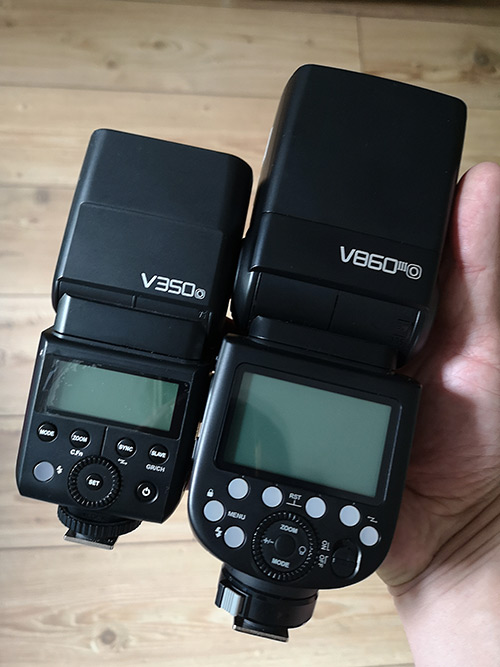
For a compact and lightweight MFT setup, like my OM SYSTEM Camera with the small M.Zuiko 60mm macro lens, the V350 is a great choice, as it perfectly integrates into the handy system.
It comes with the Li-ion battery, which is an absolute winner for me, and still has enopugh power for 90% of all use cases.
However, when i am using a longer lens, like the M.Zuiko 90mm PRO macro, i feel like the V860 makes more sense, to distribute the light to the front and, at the same time, offers me even more flash power.
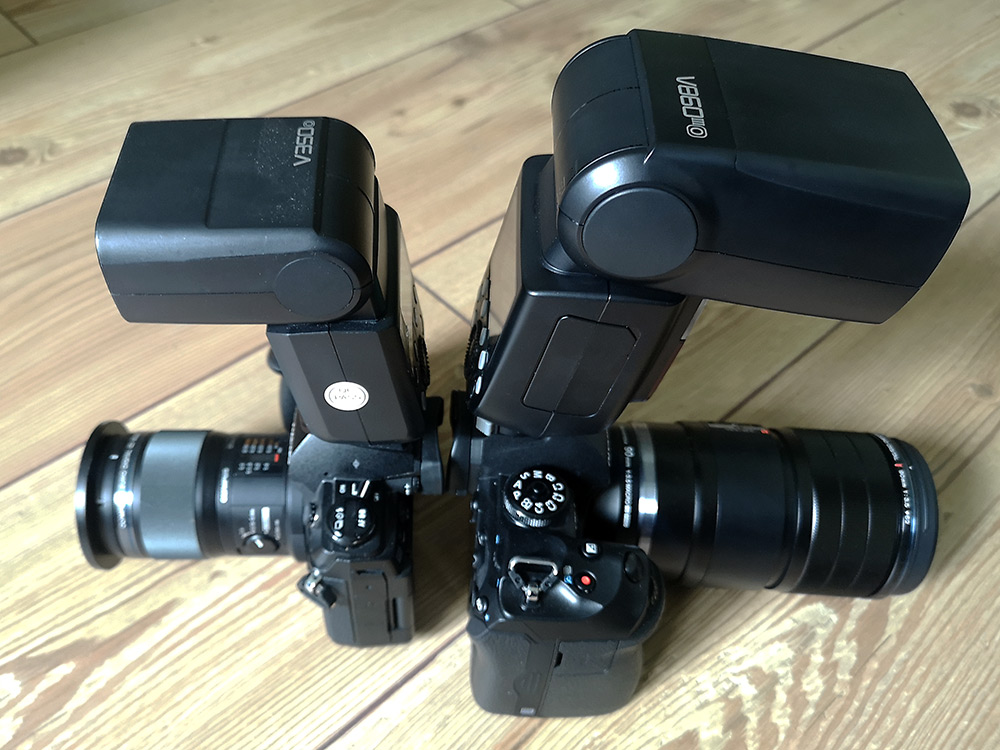
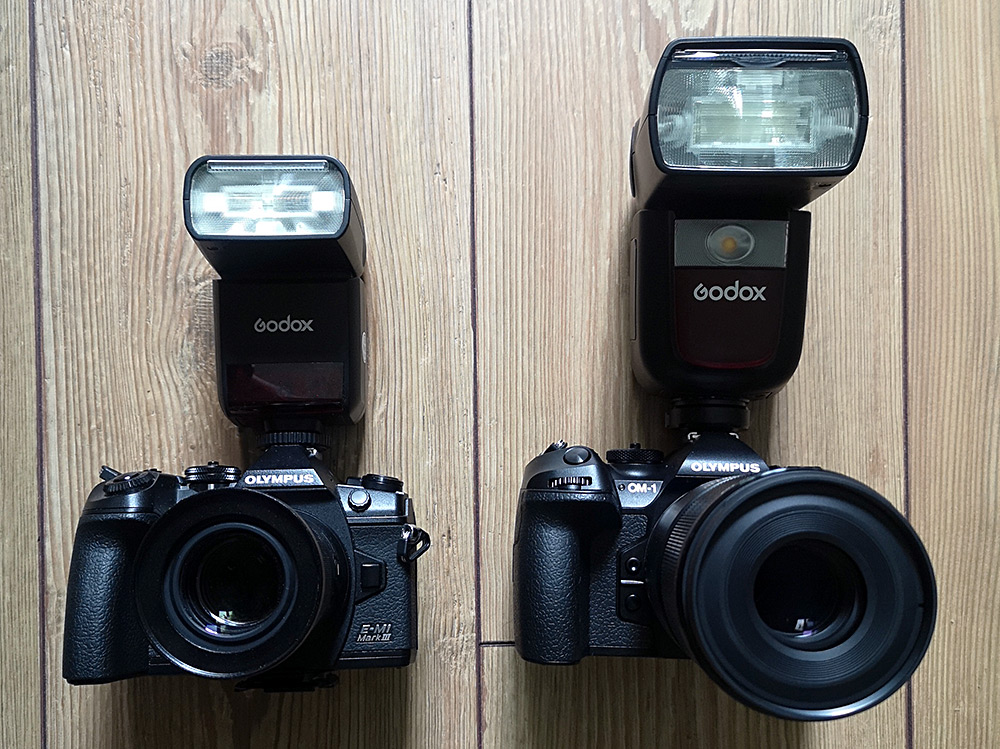
With its focusing light / modeling lamp on board (which is a bit more powerful than the V1´s lamp), i can comfortably decide if i want to use that one, or add a standalone focusing light into the mix.
Whenever i forget to bring an extra light, i always have a built-in fall-back solution now.
When reviewing the V1, i stated that it is probably the best (bigger) Speedlite for Macro photography with flash – the same goes for the V860III now.
I would prefer the V860III even, because it packs a bit flatter than the V1 with its round flash head.
Currently i use two setups, as seen above: the OM-D E-M1 with the M.Zuiko 60mm and a V350O – and the OM-1 with the M.Zuiko 90mm and the V860III.
Sample Macro Photos of insects taken with the Godox V860III
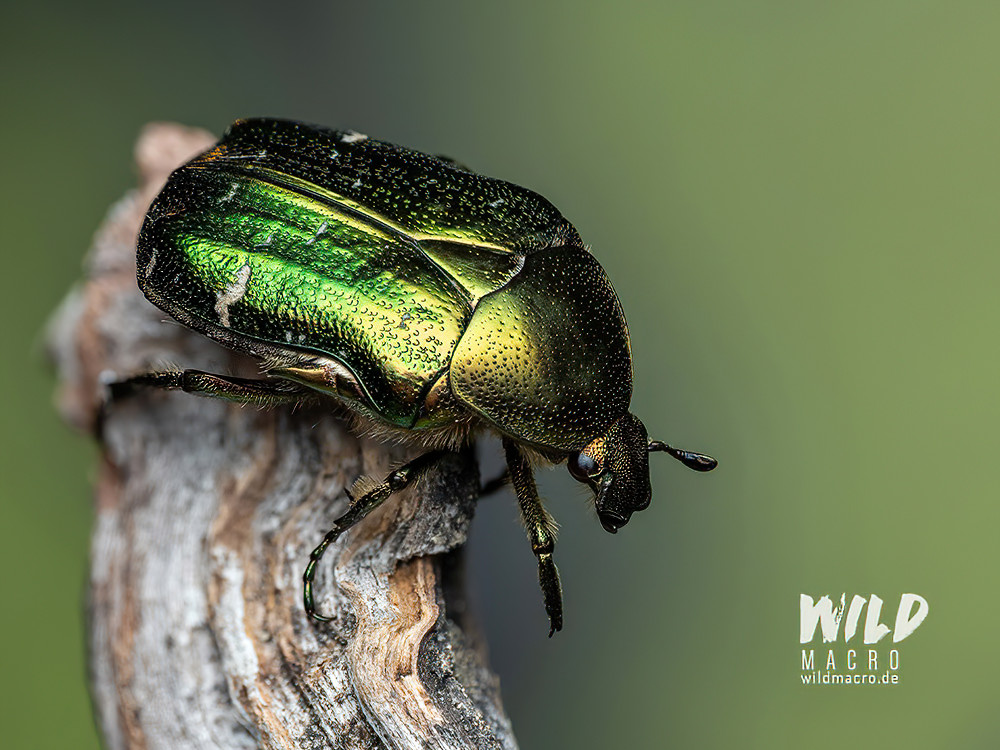
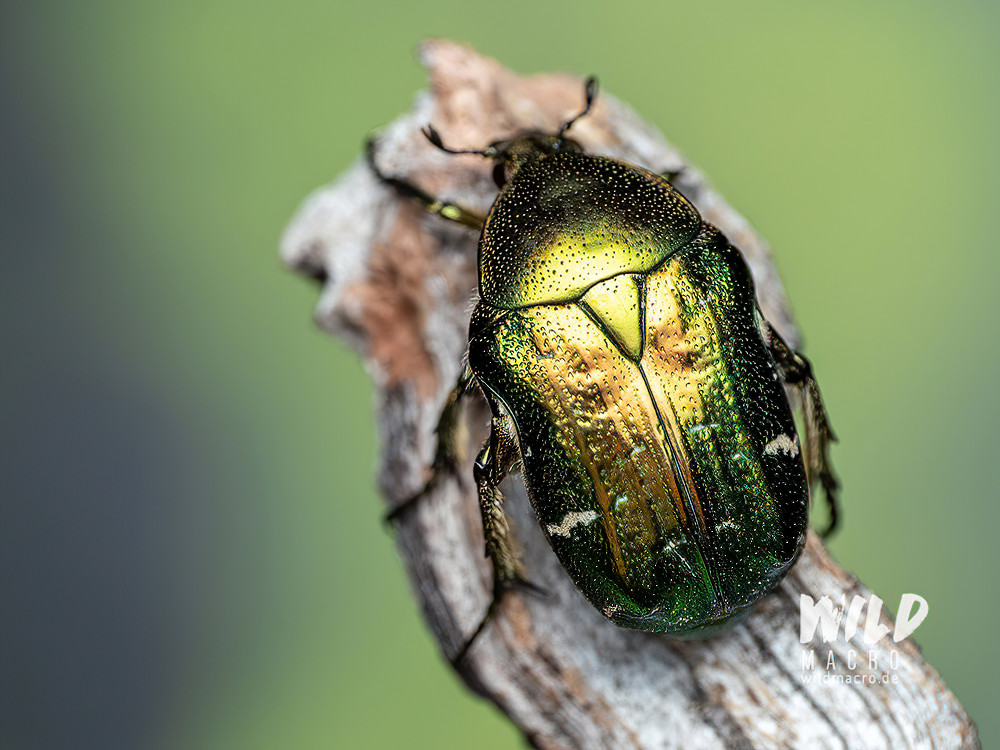
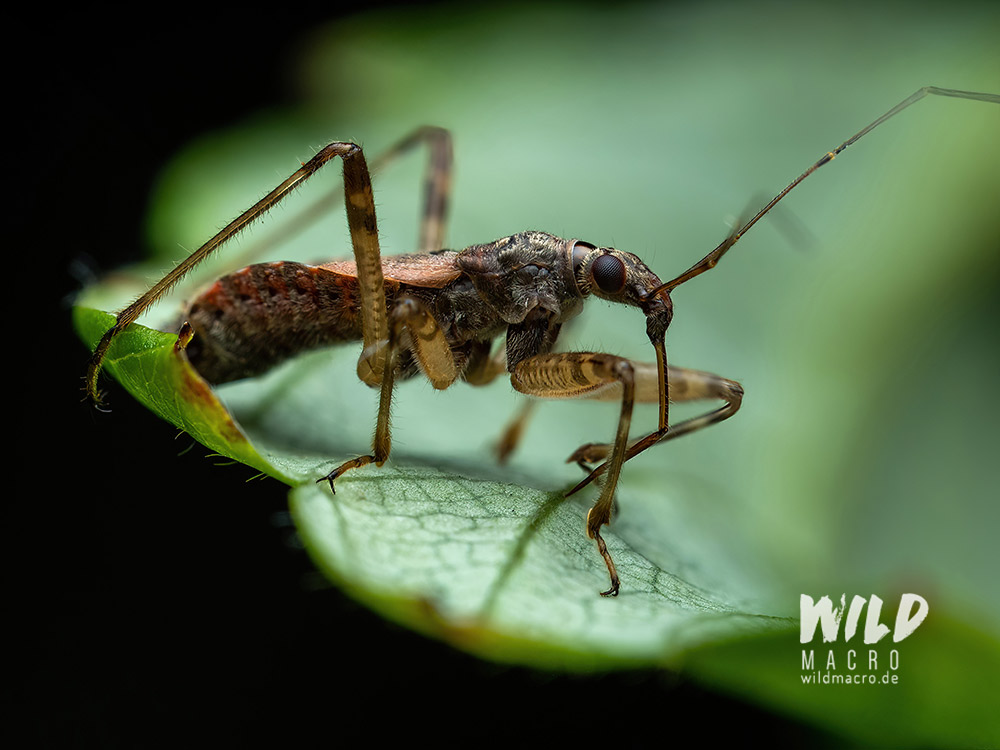
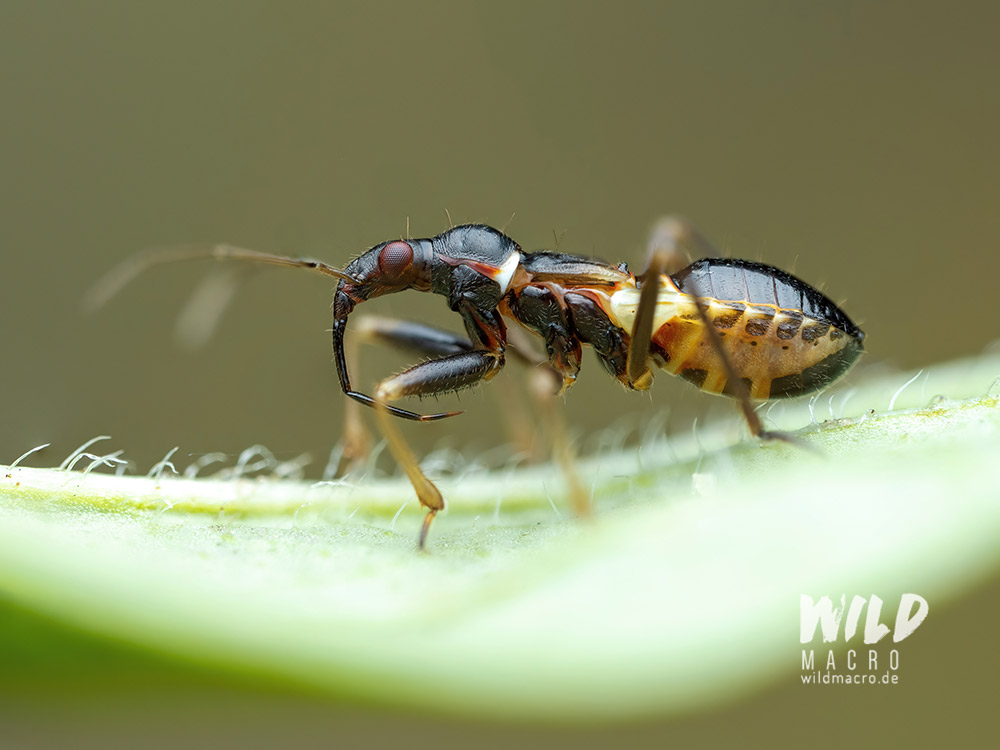
Conclusion
The Godox V860III is clearly my favorite flash, when it comes to specifications and features.
As mentioned earlier it serves as my primary flash on the bigger of 2 setups.
The number of features is hard to beat by other brands´ flashes but ultimately it is the Li-On battery of the V series that makes me choose these flashes over others.
Having the modeling light is a great bonus, when using a macro diffuser.
My only gripe is, that changing the flash power is not as intuitive and fast with the V860III as with its smaller V350 brother.
While, with the V350 you can simply turn the dial to change the flash power, with the V860III you have to left-press the dial to activate flash pwoer control and then acutally turn the dial.
So in the end it requires you one step more compared to the smaller model.
Since speed is a big factor in a macro photography workflow, when working with living, unpredictable animals, every extra step is one too much.
Aside from that there is nothing i do not love about the speedlite.
* Disclaimer: Product and detail photos of the V Series flash models © Godox
Buying the Godox V860III
You can buy the Godox V860III at Foto Koch here, for 195,17 Euro currently.
By buying this product via this link, I will get a small commission which helps me to keep this website running.

Sign up for the newsletter mailing list & free ebook

Did you enjoy these tips and want to learn more or improve your macro photography skills?
Stay up to date with new blog posts, reviews and tutorial- and ebook-releases.
Sign up below to get notified when the free edition of my ebook
‘How to master spider & insect macro photography’ is ready for download.



Andrew Neal
Posted at 10:35h, 18 AugustNice review Chris. I recently purchased the V1 over the V860III and it mainly came down to the fact that the modelling light is in the flash head rather than the body, given that my diffuser is completely enclosed. If I went for the V860III I’d have to add another 140g to it as I’d still need to use my LED light and power bank!
I very nearly didn’t go with another Godox based on my experience with the V350, given how wildly inconsistent it is when taking focus stacks but luckily the V1 is a vast improvement.
incidentally you might be interested to know that when I typed “using the Godox V1 for macro photography” into Google, your review was one of the first articles that came up. it also helped me make the decision to get one.
wildmacro-chris
Posted at 11:10h, 18 AugustHey Andrew, thanks for your feedback on this! I will add a note regarding the location of the modelling/focusing light of the V1 and 860III and clarify, that the V860III only makes sense without additional lights if using a diffuser without a backplate, like the Cygnustech.
My own customized diffuser has a low backplate, which leaves an opening for such modelling lights like the one the V860III has.
I have not tryed the V1 on my MFT OM SYSTEM setup, so i have no direct comparision between the V1 and V860III on the OM.
I might check that out at some point, as i liked the V1 a lot on my DSLR FF setup.
Aside from the modelling light and the form of the flash head, i think they do not differ much.
Might like the controls of the V1 a bit more even, but have not used it recently, as mentioned.
Also thanks for the info regarding the ranking, iam ware of that and happy that my content seems to be labelled as quality and helpful and is therefor appropriately ranked by the search engines 😉
And lastly: i try out a new plugin to have commenters notified via email when i reply to their comments. WOuld be great if you get back to me, if you somehow get this notification, so i know that it actually works – much appreciated.
Richard Rickitt
Posted at 16:37h, 09 NovemberHi I have an OMD EM5 MKIII. I’d like to use it for macro photography of insects (specifically honey bees) .
The camera has the supplied FL-LM3 flash. I would like to use a separate off-body flash so I can angle the light from a different direction (I am a beekeeper and have a specific need to have the light from both the side and the front).
Can the Godox V350o be used as an off-board flash that is triggered by the Olympus flash?
Thanks for a great website – looking forward to your book.
wildmacro-chris
Posted at 11:07h, 10 NovemberHi Richard, i did not use it that way before, but i think the V350 can serve as an optical slave flash unit, so another flash should trigger it.
But to make sure before wasting money, google and check the V350 specs, if it has the slave function (though i am pretty sure it does, as this is a standard).
You might take a look at the Godox MF12, too, which is more compac and portable, to use that as a slave. I use these for back/rim lighting of macro subjects, also in optical slave mode.
Glad you enjoy the content of the website 🙂 Good luck
Michael Falldorf
Posted at 20:20h, 10 NovemberLieber Christian,
vielen Dank, das du uns deine wirklich tollen Makroaufnahmen zeigst. Ich fotografiere nun schon seit 2007 mit Olympus Kameras, damals noch mit FT Bajonett und hautsächlich in der Unterwasserf0tografie. Seit ich war kurzem an dem Webinar “Faszination Makrofotografie – Eine Reise durch Costa Ricas Artenvielfalt” von Rafael Steinlesberger am 31.10.2023 teilgenommen hatte, sind meine ethischen Bedenken Makros mit einem Blitz herstellen, etwas in den Hintergrund gerückt. Ich besitze selber das 60 er, das 90er und verschiedene Close Up Linsen, um Makros herzustellen. Was mich aber immer wieder bei den meisten Ambrassodoresn etwas stört, ist die Tatsache, das nicht erklärt wird, wie ein bestimmter Blitz einzustellen ist, bzw. welcher Modus konkret angewählt werden soll, um auf kurze Distanz zu zu belichten. Ich besitze ebenfalls auch den Godox V1-O. Rafael, der ebenfalls diesen Blitz einsetzt, ist in seinem Webinar mit keinem Wort darauf eingegangen, wie der Blitz eingestellt werden soll. Neben der “Multi” Funktion des V1 lässt der Blitz ja auch “HSS Sync” zu. Dann ist die Abhängigkeit von der 1/100 Blitzsynchronzeit nicht mehr gegeben, sondern nur noch Blende und/ oder ISO Einstellung wichtig. Ich hatte Rafael angeschrieben, und um eine kurze Stellungnahme zu seinen Blitzeinstellungen gebeten. Leider habe ich keine Antwort bekommen, was ich sehr schade finde. Wir müssen aber ggf zur Kenntnis nehmen, dass es neben den offiziellen Ambrassadoern viele Hobby-Fotografen gibt, die sehr engagiert sind, und sehr gute Ergebnisse abliefern. (siehe Webseite von Frank Rückert, http://www.pen3.de) Wir können aber nicht alle “Botschafter” für OMDS sein, weil viele, so auch ich, noch einem Hauptberuf nachgehen, der es uns erst möglich macht., die sehr guten Objektive und die aktuelle OM-1 Kamera von jetzt OMDS zu kaufen. Nun ist es aber nicht meine Aufgabe, das zu kritisieren und stelle dir deshalb die Frage, wie du deine OM-1 und deinen V1 Blitz einstellt, um optimale Ergebnisse auf kurzer Distanz zu erreichen. Auch wäre für mich interessant, ob man nicht unterschiedliche Diffuser für die beiden Makroobjektive verwenden sollte, weil das 60er eben kürzer ist und ein normaler Cygnustech Diffuser das Licht zu weit nach hinten streuen würde. Siehst du dich die Möglichkeit, mir auf meine Mail zu antworten und mir ggf, meine Fragestellungen aufzulösen.? Natürlich kann ich mir das alles in stundenlangem Ausprobieren selber erarbeiten. Was spricht aber dagegen, wenn die Ambrassadoren von OMDS einfach auch immer erklären, wie sie es genau machen. Bitte nicht als negative Kritik auffassen, aber wenn schon die Makrofotografie mit Blitzlicht beworben wird, würden sich ganz bestimmt alle ambitionierten Hobbyfotografen, die sich in den Sommermonaten bereits um 4:30h aus dem Bett schälen. um in einem Biotop zu fotografieren, ganz sicher freuen, wen Sie schnell ihre Geräte einstellen könnten. Ich würde mich sehr über eine Antwort von dir freuen. Rafael hat es leider nicht geschafft, ganz sicher hat auch er sehr viel zu tun. Aber wir wollen ja alle in unserem ureigenem Kosmos weiterkommen.
Liebe Grüße aus Hamburg
Michael
wildmacro-chris
Posted at 21:58h, 10 NovemberMoin Michael,
danke für deine ausführliche Nachricht, die ich erst in einer direkten Email beantworten wollte, jetzt aber hier ausführlicher kommentiere, da die Fragen und Antworten ja durchaus auch andere interessieren können.
Rafi hat deine Frage vllt. einfach übersehen, er hat ja auch noch einen Job – wie die meisten Ambassadors, da gibt es zwar auch einige hauptberufliche Fotografen, aber vermutlich mindestens genau so viele, die anderen Jobs nachgehen 😉
Nun gerne zu deinen Fragen: die Antworten darauf, finden sich, ganz wie von dir “gefordert” oder “vorgeschlagen” in den vielen Artikeln die ich z.B. hier auf meiner Website geschrieben habe.
Insbesondere zu den Blitzen gehe ich hier immer gerne ins Detail, eben genau weil ich sie in 95% meiner Aufnahmen nutze.
Meine Einstellungen sind natürlich auch keine festgeschriebene Weisheit, viele Wege führen nach Rom.
Die meisten die ich aber kenne, fotografieren mit ähnlichen Einstellungen und tatsächlich sind das hier ganz banale, ohne fancy Modi wie HSS usw:
Bei Verwendung eines Diffusers, was Sinn macht, empfiehlt es sich die Zoom Einstellung auf die weitwinkligste zu stellen, damit das Licht gut streut.
Der Blitz wird im manuellen M Modus verwendet, einfach um komplett kontrolliert und reproduzierbar zu sein.
Das war´s eigentlich schon, ISO 200 hilft etwas Blitzpower zu sparen und ermöglicht gleichzeitig den Blitz herunter zu regeln, was den “Einfrier-Effekt” von Bewegung verstärkt, ein immenser Vorteil bei den flinken Insekten und Spinnen.
Ich starte meist mit Blitzstärke 1/16 oder 1/32 und regle dann nach einem Testschuss einfach etwas herunter oder hoch. Häufig verändere ich die Einstellung gar nicht, selbst wenn ich von 1:1 zurück gehe auf z.B. 0,5x. Bei 2:1 kann es schon mal passieren, dass ich etwas mehr Power gebe.
In meinem Youtube Live Video von den Foto Koch Fototagen letzte Woche, konnte man das ganz gut sehen, da habe ich einen grün schillernden Käfer fotografiert und nichts am Blitz verstellt, trotzdem waren die Fotos eigentlich alle anständig belichtet, egal ob bei 0,5x, 1:1 oder 2:1.
Wenn du noch weitere Fragen hast, schreib mir gerne eine Email oder kommentiere hier einfach noch mal 🙂
Beste Grüße nach Hamburg
Ben
Posted at 21:44h, 11 FebruaryDoes the Godox V350 give consistent output for focus stacks? Or is a bigger, more powerful flash needed?
wildmacro-chris
Posted at 15:28h, 21 FebruaryHi, sorry for the late reply. It depends on the power you set and the size of the stack/bracket as well. For smaller stacks the V350 can keep up, but i prefer the V860III, as it integrates into my setup with the 90mm anyways and also gives me the power i need IFi need it – even though i rarely really need it, to be honest.
I would have to do tests with the V350 again, as i didn´t use it for quite a while now after focusing on the 90mm more than on the super compact 60mm.
Luis Rivas
Posted at 17:48h, 15 Mayi just crack my TT350 flash, i wonder which flash will be better for macro photography using it on the camera, the v350 or de v860?
I use a loawa 65mm
wildmacro-chris
Posted at 10:38h, 16 MayHi Luis, that depends a bit on how close your subjects are from your front lens and how compact your setup is.
For shorter lenses i would go for the V350 and for longer lenses i would go for the V860 to get a better angle for the light to shine to the front of the lens, where the subject is.
If you are photographing butterflies, for example, that are further away, then it would not matter so much, which flash you use.
I unfortunately cannot recommend a specific flash because there are many variables to check for choosing the optimal flash.
I have both the V350 (to use with my M.Zuiko 60mm) and the V860 (to use with my M.Zuiko 90mm) and like them both.
The V860 has more power than the smaller V350 though, and the latest V860III also has a nice focusing light, which i like a lot.
Are you using a Diffuser, too?
Luis Rivas
Posted at 15:03h, 16 MayHi Chris,
Thanks for the fast reply.
I´m using a couples of cheaps diffusers for now, I am evaluating the purchase of an AK diffuser,
For the size and weitgh i will get the v350 for now, Maybe in the future I will consider purchasing the v860 depending on if I lack lighting or need to do longer stacks.
Thanks again and I love your content
Jon
Posted at 00:47h, 12 JulyThanks for the review. Very helpful.
What I’m trying to work out to help aid my own purchase decision is:
Are the two flash’s power settings comparable? What I mean is, if I set both to 1/16th power, with all else being equal, will I get the same result with both flashes?
I’m also keen to understand the recycle time at lower powers such as 1/16th. I currently have the V350O and find that at 1/16th power it can fail to recycle in time when doing focus bracketing and I can get blank frames in my stacks.
Does the V860 suffer the same issue at 1/16th power (and is 1/16th the same amount of light as with the v350)?
In a nutshell – should I upgrade to the V860 if I want to overcome the issue of the flash failing to fire on the V350 in all of my shots when focus bracketing at 1/16th power?
Thanks in advance!
wildmacro-chris
Posted at 11:19h, 12 JulyHey Jon, unfortunately I don´t have time to test that for you, but i´ll try to recall that from memory from when i was using the V350 setup (with my 60mm lens): The intensity of light is measured in guide numbers, and i am pretty sure the V860 has a considerably higher one compared to the V350. Also, I have not experienced the V860 failing, but that all depends on 1. the speed with which you shoot and 2. the power-setting (yours is 1/16th, this should be totally fine though). Another factor is how long has the flash been firing already until it fails a frame. If you go for a 100 shot stack chances grow that it can´t keep up with the recycle, compared to just a smaller 16 shot stack. Which recycle time have you set for the flash inbetween shots/flashes?
Geoff White
Posted at 13:16h, 19 JulyHi Christian
I have the OM system Flash FL700WR and cycgnus tech diffuser. – I have OM-1 and OM-1ii
Have you ever done a comparison of this flash with the Godox 860iii?
I see that many Macro photographers use the Godox and not the Olympus Flash apart from one OM ambassador that that uses the FL900.
Would it be worth the switch to the Godox?
Thanks
Geoff
wildmacro-chris
Posted at 16:34h, 20 JulyHi Geoff, personally I like the Godox flashes better. The problem I had with the FL700 was, that the focusing light went and stayed off after the first shot (of a focus bracket or stack). With the Godox it stays on. The control was more intuitive for me, too. The other great advantage is the battery püack of the Godox V series flashes – they seem to load quicker, have a more stable power output – but that is just my experience and feelings and nothing i tested in a laboratory. Hope that helps. Check out my blog post about the Godox V series in general as well, maybe, to read more about that. Best regards
Paul Hobson
Posted at 18:57h, 05 DecemberHi, I have a Godox 860v111, om1 and 90mm macro. When I do a focus bracket, no matter how many frames, and with the flash at 1/128 power, the bracket is really slow; nothing like the speed it progresses without the flash. I have seen utube vids where a flash gun is firing as fast as a quick stack. What settings do I have to dial into the camera and flash gun?
Many thanks
Paul
wildmacro-chris
Posted at 11:18h, 13 DecemberHi Paul, that sounds like a problem with settings indeed, the V860II is capable of continuously fire dozens of flashes in high speed.
Depending on how you shoot your focus bracket, set a recycle time for the flash to “breathe” inbetween shots, for the OM SYSTEM cameras for example put a 0.1 in the bracketing/stacking menu in-cmaera. I use the flash in manual mode only, wide zoom, starting at 1/16 or 1/32 power. If that does not work, try resetting the flash to factory setting. WHat I experienced is, that if you have it set to be a master trigger to set off slave flashes, this can mess up the speed somehow. Resetting helped me to get it to work again (though it was a V350 in my case, but i guess it might be the same issue). If that does not help, please send me an email.
Paul Hobson
Posted at 12:01h, 13 DecemberHi Chris, many thanks for the advice, using it I have managed to get the flash to work now, firing continuously in bracketing. I found that when I thought I was in manual, I wasn’t.
Best
Paul
wildmacro-chris
Posted at 12:34h, 13 DecemberPerfect, thanks for the clarification 🙂 Have a good weekend Paul
MJK
Posted at 21:34h, 14 JanuaryHi Chris. Thanks for the great article on flash photography. I read all about the V350 and V860 on your website. I was wondering how suitable the Om-D E-M1iii with the M.Zuiko 60mm f2.8 macro lens and the v860iiio is? I wanted the v350o, but it is unavailable. I might consider the M.Zuiko 90mm macto in time.
Thanks and your photos are amazing!! 🙂
MJK
wildmacro-chris
Posted at 18:26h, 15 JanuaryHi and thank you for the kind words first of all. Ususally I´d say long lens (90mm) + tall flash (V860III), short lens (60mm) + short flash (V350). Simply because the tall flash will shoot relatively far, even with the widest setting, and at highest magnifications, the light will hit a point more in the distance more than the front of the lens, where you want it. You can use a diffuser, which will angle the light down, which is a big improvement. Some diffuser makers also make customized diffusers, which can even reflect the light of the tall V860II down towards the 60mm´s front element. you can read more about the diffuers here: Best Flash Diffusers for Macro Photography.
The Trick Bits Diffuser recently added a model that works with the V860II with both the 60mm and the 90mm, by changing the fiffusion panels angle depending on which lens you use. You find that one here.